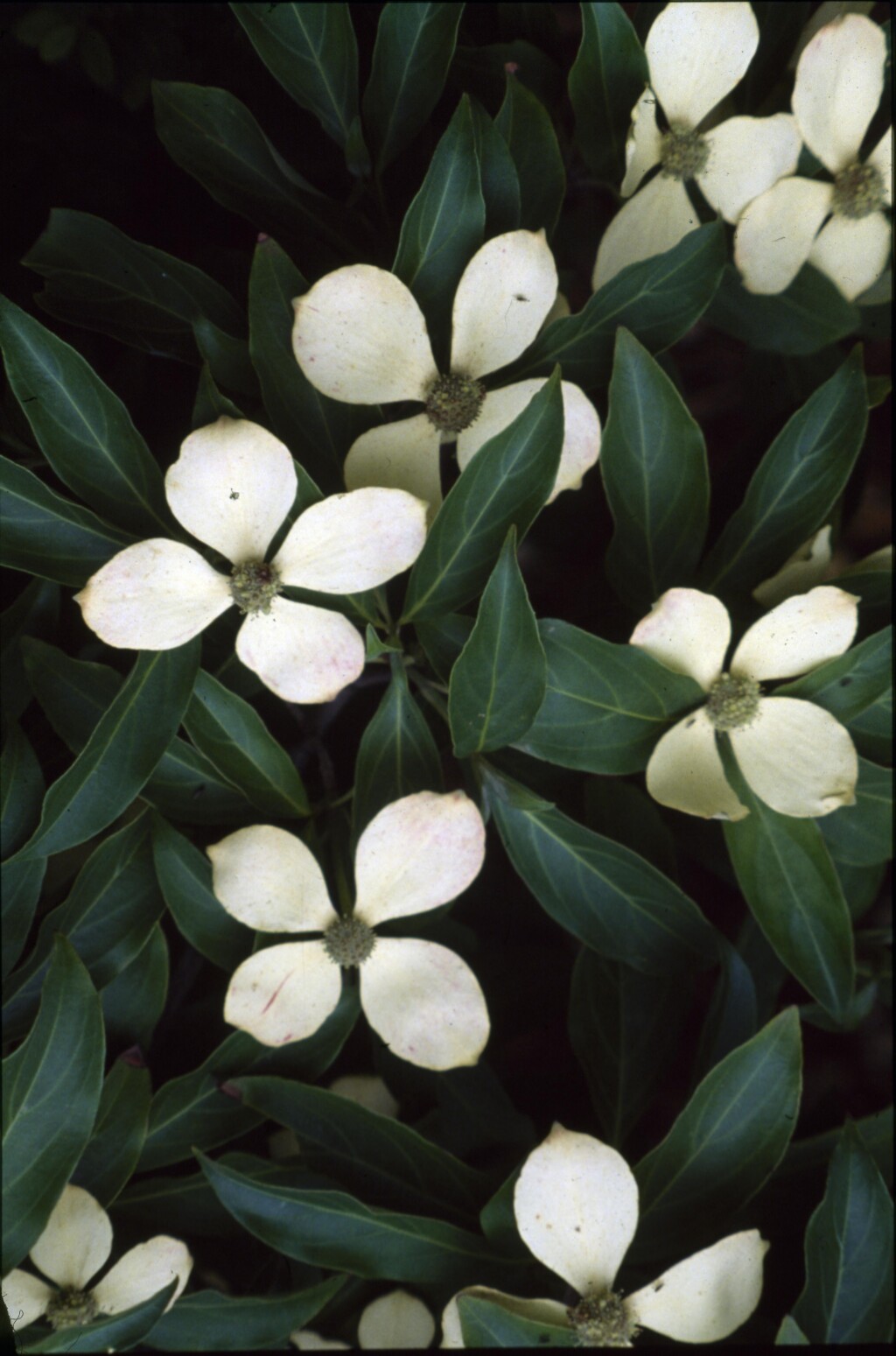Cornaceae
Trees or shrubs, rarely herbs. Leaves opposite (rarely alternate), simple, entire or sometimes lobed or toothed, usually petiolate; stipules absent. Inflorescences axillary or terminal cymes, panicles or heads, sometimes subtended by large colourful bracts. Flowers regular, usually bisexual or, on dioecious plants, unisexual; sepals 4 or 5, open or valvate in bud, small or almost absent, persistent, calyx-tube adnate to ovary; petals 4 or 5, free, inserted around an epigynous disc, imbricate or valvate, rarely absent; stamens usually equal to and alternating with petals; ovary inferior, 1–4-celled, ovules 1 (rarely 2 or 3) per cell, pendulous, anatropous, style single, short or long, stigma capitate or lobed. Fruit a drupe, or rarely, a berry; seed oblong.
Several species are of horticultural appeal and some of commercial importance having decorative timbers.
About 13 genera with c. 100 species, chiefly in temperate parts of the Northern Hemisphere but also in tropical and subtropical regions of the world; 2 genera (1 naturalized) and 3 species in Australia.
Jeanes, J.A. (1999). Cornaceae. In: Walsh, N.G.; Entwisle, T.J., Flora of Victoria Vol. 4, Cornaceae to Asteraceae, pp. 23–24. Inkata Press, Melbourne.
 Spinning
Spinning

